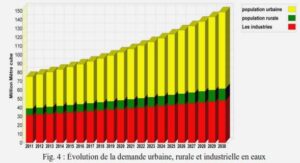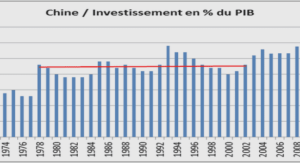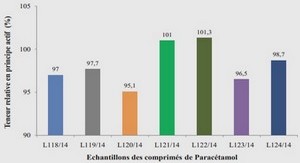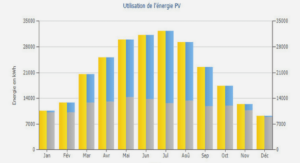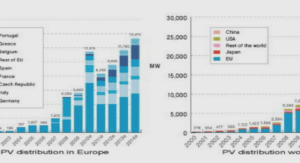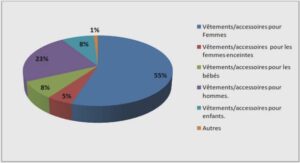Dynamique et restauration d’une steppe
méditerranéenne après changements d’usages
Introduction
Land-use changes have lead to major alterations of ecosystems all around the world in the recent decades (Vitousek et al., 1997; Rands et al., 2010). Due to progress in agronomy in the last century, agriculture intensification has spread even to low productive ecosystems, which are therefore currently highly threatened (Huston, 2005; Millennium Ecosystem Assessment, 2005). Understanding how changes in land-uses can alter these ecosystems has important implications, especially in a context where environmental authorities encourage limitation of biodiversity loss and restoration of ecosystem (Millennium Ecosystem Assessment, 2005; Convention on Biological Diversity, 2011). In this context, land abandonment is viewed as a great opportunity both to recover former ecosystems and to study ecosystem natural or spontaneous dynamics and resilience (Prach and Walker, 2011). Understanding succession after disturbance is of special interest in order to use its patterns and processes to restore disturbed ecosystems, especially using natural or near-natural restoration techniques (i.e. with the least active intervention possible) (Řehounková and Prach, 2008; Prach and Hobbs, 2008). Disturbance characteristics have to be defined to understand their effects on ecosystems. According to Grime (1977), a disturbance is a constraint that limits plant biomass by causing its destruction. Sousa (1984) defined several attributes of disturbance: i) the extent: the size of the disturbed area; the magnitude, including ii) intensity: the strength of the disturbing force, and iii) severity: the damage caused by the disturbance; iv) the frequency: the number of disturbances per amount of time and v) the predictability: the variance of the mean time between disturbances. If values had to be given to each of these attributes for cultivation disturbance, they would be high, except the predictability and frequency: i) they occur over a wide extent: wider than the scale at which community processes occur (Peterson et al., 1998; Huston, 1999), ii) compared to the components of most cultivated ecosystems, the strength of the disturbing force is high (e.g. chisel plow vs. roots), iii) the severity is high: almost all mature organisms die during a cultivation event. Due to all these characteristics, cultivation will be further defined as a severe anthropogenic disturbance. Although a high recovery of ecosystems seems to occur after endogenous or historical disturbances, such as fire or grazing (Harrison and Shackleton, 1999; Lavorel, 1999), a severe anthropogenic disturbance, such as cultivation, shows low resilience in many Chapter 2: multilevel approach to resilience 53 ecosystem types (Bellemare et al., 2002; Dupouey et al., 2002; Römermann, Dutoit, et al., 2005; Elmore et al., 2007; Gustavsson et al., 2007). Despite the growing number of studies showing interest in taking into account mycorrhizal interactions to understand plant community dynamics (Grime et al., 1987; O’Connor et al., 2002; van der Heijden and Horton, 2009; Bever et al., 2010), there is a marked asymmetry between the study of plants and that of mycorrhizae due to the fact that the study of mycorrhizae is more difficult (Bever et al., 2001). Mycorrhizae can be found in most plant communities (van der Heijden and Sanders, 2002) and a meta-analysis has shown that they build interactions with more than 80% of plant species and 92% of families (Wang and Qiu, 2006). Mainly through the increased volume available for prospection, mycorrhizae increase plant water (Allen, 1982; Augé, 2001) and phosphorus uptake (Bolan, 1991; Koide, 1991). They also increase the growth of plant individuals and of their descendants (Koide and Lu, 1992; Heppell et al., 2002). All these impacts therefore suggest a potentially marked impact on plant communities, and it has been shown that they can modify competition between plants and their coexistence within a community (Grime et al., 1987; Zobel and Moora, 1995; Hartnett and Wilson, 1999; Smith et al., 1999; Bever, 2002) as well as structure (Wilson and Hartnett, 1997; O’Connor et al., 2002), richness and composition of plant communities (Gange et al., 1993; Francis and Read, 1994; Zobel and Moora, 1995; Hart et al., 2003). In the context of multiple studies which are carried out on plant community dynamics or restoration in the La Crau Mediterranean steppe (cf. Introduction section I.5.6. and Dutoit et al. (2011)), it seems important to have a first insight into the behavior of mycorrhizae. The objective of this study is therefore i) to measure the short-, mid- and long-term effects of a severe anthropogenic disturbance on three components of a Mediterranean steppe ecosystem: the plant community, soil chemical parameters and mycorrhizal infestation and ii) to identify the difference in recovery rates of these three ecosystem components (Alard et al., 1998).
Materials and methods
Study area
The La Crau area is the last xeric steppe of south-eastern France (ca. 10,000ha) and has been shaped by i) a dry Mediterranean climate, ii) a particular 40cm-deep Chapter 2: multilevel approach to resilience 54 soil composition with about 50% of silicaceous stones overlying an almost impermeable conglomerate layer, making the alluvial water table unavailable to the roots of plants and iii) itinerant sheep grazing over a period of several thousand years (Devaux et al., 1983; Buisson and Dutoit, 2006). This has led to a unique and speciesrich association of plants composed mainly of annuals and dominated by Brachypodium retusum Pers. and Thymus vulgaris L.. The steppe, in which the only endogenous disturbance was sheep grazing, has lost more than 80% of its original 45,000 ha area due to exogenous anthropogenic disturbances (Buisson and Dutoit, 2006). Our study focuses on three of them, all were cultivation settled on the original steppe and are now abandoned: a vineyard abandoned approximately 150 years ago (AF-150), melon cultivation fields abandoned 35 years ago (AF-35) and an orchard abandoned in 2006 which had undergone its last disturbance comparable to plowing in 2009, two years before sampling (Chapter four and Jaunatre et al. (2012)) (AF-2) (Figure 2.1). The steppe was used as a control where no severe anthropogenic disturbance occurred according to available historical information (Cassini et al., 1778). Our study has a chronosequence approach. Despite the many advantages of diachronic studies, space for time substitution or synchronic studies allows the surveying of a longer time span and have already been proved to be relevant (Debussche et al., 1996; Foster and Tilman, 2000). 2.2.2. Sampling As the former vineyard and the former orchard are unique, we focused on the two areas located around these two abandoned fields, which are relatively close together compared to the whole La Crau area (Figure 2.1). Therefore, two steppe sites (ST-6000) and two AF-35 sites were selected, one of each close to the AF-150 or close to the AF-2. In each of the six sites selected, three sampling areas were set (Figure 2.1C), where mycorrhizal infestation, vegetation, microbial community and soil were sampled (Figure 2.1D).
Soil analyses
In each sampling area, three 70g sub-samples of soil were gathered (Figure 2.1D) and pooled together to constitute one soil sample. They were sieved with a 2mm mesh sieve for analyses carried out by the INRA (Institut National de la Recherche Agronomique). Granulometry (percentage content of clay (<0.002 mm), fine silt (0.002-0.02 mm), coarse silt (0.02-0.05 mm), fine sand (0.05-0.2 mm) and coarse sand Chapter 2: multilevel approach to resilience 55 (0.2-2 mm)), nutrient analysis (organic C, total N, P2O5 (Olsen et al., 1954), CaO, and K2O) and water pH were measured according to the methods described in Baize (2000). ST-6000 AF-2 AF-35 Arles Salon Fos 6 km Berre lagoon N 150 km 3 m N A B D 1 km AF-150 AF-35 Sampling area N C Figure 2.1: Study site and sampling design. A: location of the La Crau area in France. B: location of study area in the La Crau area. C: location of the sites: the two steppe sites (ST6000), and in the fields abandoned 150 (AF-150), 35 (AF-35 ×2) and 2 (AF-2) years ago. White areas represent the steppe, dark grey areas represent sampled abandoned fields and light grey areas represent other land uses (forest, roads, former or present cultivations). D: Detail of sampling area, the large circle represents the 25 m diameter prospected area to find individuals of the four species for mycorrhizal infestation assessment, the grey squares represent the three 2x2m quadrats where plant species abundances were recorded and the black dots represent the three soil samples before they were pooled for soil physical and chemical analyses and microbial community analysis.
Vegetation survey
Vegetation relevés were made on three 2x2m quadrats for each sampling area and a Braun-Blanquet coefficient was assigned to each plant species recorded (Braun-Blanquet et al., 1952). Moreover, average height and vegetation cover were estimated in each quadrat.
Mycorrhizal infestation
Colonization was assessed on four species occurring almost all along the gradient decribed above: i) Carthamus lanatus L. which is an Asteraceae more abundant in the steppe, ii) Carduus pycnocephalus L. which is an Asteraceae more abundant in the abandoned fields, iii) Brachypodium distachyon (L.) P. Beauv. which is a Poaceae more abundant in the steppe and iv) Bromus madritensis L. which is a Poaceae more abundant in the abandoned fields. Roots were colored with the black Schaeffer ink and vinegar coloration method (Vierheilig et al., 1998). Total percentage of mycorrhizal infestation: internal hyphae, vesicles or arbuscules, were counted with the magnified intersections method (McGonigle et al., 1990). 2.2.6. Data analysis In order to have a global overview on the soil parameters and on plant communities, multivariate analyses were performed: a Principal Component Analysis (PCA) for soil parameters and a Non-metric Multi Dimensional Scaling (NMDS) for plant community (Borcard et al., 2011). As data were conformed to parametric assumptions, analyses of variance (ANOVA) followed by Tukey Honest Significant Difference post-hoc tests were performed to compare values between the four field ages for soil nutrient contents, vegetation species-richness, Shannon index, Shannon evenness and mycorrhizal infestation. However parametric assumption were not reached for vegetation average height and percentage of cover, we therefore performed Kruskal-Wallis tests and pairwise Wilcoxon tests with a p-value adjustment according to Benjamini-Hochberg’s method. All the analyses were conducted with R 2.13.0 (R Development Core Team, 2011), univariate analyses with its package “stats” and multivariate analyses with its packages “ade4” (Chessel et al., 2004; Dray and Dufour, 2007; Dray et al., 2007) and “vegan” (Oksanen et al., 2008). Chapter 2: multilevel approach to resilience
Results
Soil analyses
The ordination of samples by their soil characteristics (Figure 2.2) discriminates the four ages of the gradient. The first axis (35.2%) discriminates a gradient of age from the 2 year-old abandoned field (AF-2), to the 35 year-old abandoned field (AF-35) and to the 150 year-old abandoned field (AF-150) and the steppe (ST-6000), with significant decreasing concentration of P2O5, pH and K2O (Figure 2.3). The second axis (24.5%) discriminates the steppe (ST-6000) and the oldest abandoned field (AF150), with apparently more carbon and nitrogen, despite the fact that there is no significant difference when each soil variable is tested separately with post hoc tests for these two sites (Figure 2.3). Figure 2.2: Ordination plot of the Principal Component Analysis based on soil granulometry and nutrient contents in steppe (white, ST-6000) and abandoned fields (grey, AF-2/35/150).
Vegetation survey
For all the plant community measured variables, the youngest abandoned field (AF-2) is significantly different (Figure 2.4), with lower species-richness, Shannon index and Evenness and higher average height and vegetation cover. Average height and vegetation cover are not different within the three other communities. However, species-richness and Shannon index are significantly lower in the AF-35 compared to the ST-6000 or AF-150. Moreover, Evenness is significantly lower in AF-35 than in the ST6000. The oldest abandoned field (AF-150) does not show significant differences with the ST-6000 for all the five plant community variables (Figure 2.4). The differences in plant community variables are also discernible in plant community compositions (Figure 2.5).
Acknowledgement – Remerciements |
